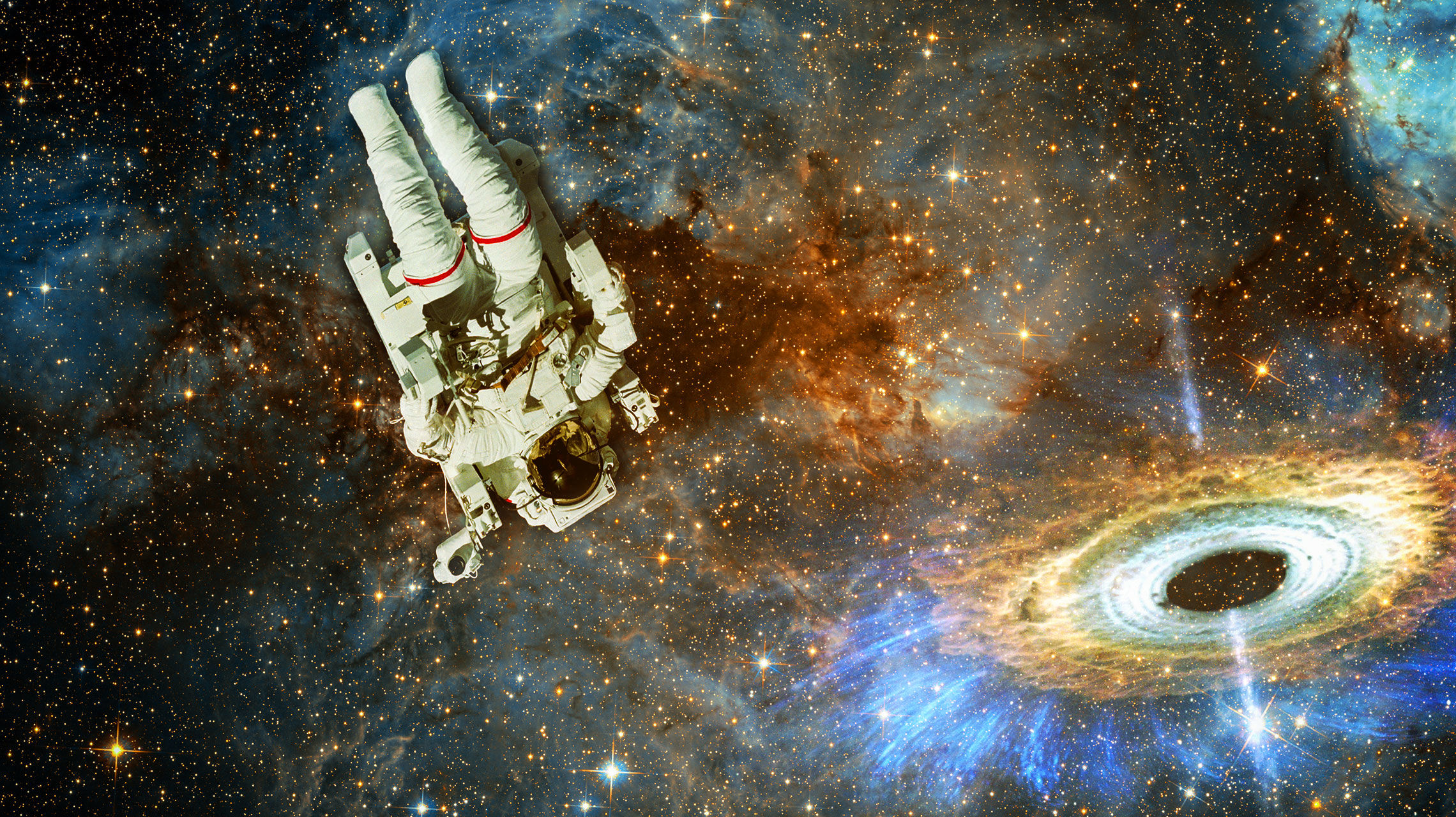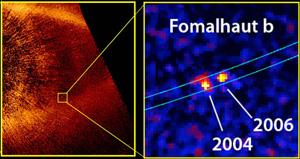Create a free profile to get unlimited access to exclusive videos, sweepstakes, and more!
The return of Sauron's planet

First it was there, then it wasn't, and now it just may be back again: the first exoplanet directly observed orbiting a normal star, Fomalhaut b, has had quite a ride.
[This post has a bit of detail to it, so here's the tl;dr version: new analysis shows an object orbiting the star Fomalhaut may actually be a planet, enveloped in a cloud of dust. We can't for sure it exists, but we can't say it doesn't, either! Earlier claims of it not existing may have been premature. Also, at the bottom of this post is a gallery of direct images of exoplanets.]
First a brief history. In 2008, astronomers revealed huge news: they had successfully taken images of planets orbiting other stars. Up until then, the only evidence we had of exoplanets was indirect, either by their tugging on their stars which affects the starlight, or by having them pass between their stars and us, dimming the starlight.
But, along with Gemini telescope pictures of a family of planets orbiting HR 8799, Fomalhaut b was the first planet ever seen directly, as a spark of light in a picture. Here is that historic shot:
It's Sauron's eye! [Click to embiggen.]
The object is labeled. It doesn't look like much, but the important thing to note is that it moved between 2004 and 2006 (see picture below), and it was definitely in both images taken two years apart. That means it wasn't some bit of noise or detector error. Moreover, the movement was consistent with what you'd expect from a planet. Not only that but the star Fomalhaut is surrounded by a vast ring of dust - Sauron's eye - and the inner edge of the ring is sharp. That's what you would expect if a planet was orbiting inside the ring; its gravity sweeps up the dust on the inside of the ring. Given the brightness, we were looking at an object with a few times Jupiter's mass, much smaller than a star, so definitely a planet.
All in all, it looked good, and it looked real.
Then, in early 2012, some astronomers threw a Pluto-esque wet blanket on the news. A planet that big should be bright in the infrared. Fomalhaut is a youngish star, only a few hundred million years old. Any planet more massive than Jupiter should still be hot, radiating away the heat of its formation. They looked for it in the infrared, and it wasn't there.
Uh oh.
 To make things worse, they found that if you extrapolate the orbit of the supposed planet using its movement, it should cross the ring. That's bad, because its gravity would disrupt the ring after a few million years tops. The ring is there, so that planet means the planet must not be.
To make things worse, they found that if you extrapolate the orbit of the supposed planet using its movement, it should cross the ring. That's bad, because its gravity would disrupt the ring after a few million years tops. The ring is there, so that planet means the planet must not be.
Their conclusion: this object is a clump of dust, a cloud, orbiting the star. That fits the data, and a planet doesn't. Cue the sad trombone.
But wait! We're not done! A team of astronomers took another look at the original Hubble data. They reprocessed it and re-analyzed it, and what they found is that the object is definitely real; there's definitely something there. OK, that's a good start. They also see it in Hubble images taken with a bluer filter (it wasn't spotted before), which is great: more confirmation it exists, and gives a broader color coverage. That's important, as I'll get to in a sec.
They also took images in the infrared using the gigantic 8.2 meter Subaru telescope in Hawaii. Interestingly, they did not detect it, which corroborates the finding that whatever this thing is, it's dark in the IR.
So what is it?
This is where things get interesting. First, they can rule out a dust cloud! A clump of stuff floating out there around the star would have to be pretty big to be so bright. So big, in fact that shear forces would rip it apart in a pretty short time - like a few tens of thousands of years, much less than the age of the star. That makes it pretty unlikely it's a dust cloud.
So if it's a planet, that can be checked, too. Because they saw it in a blue filter, the astronomers in the new study were able to look at computer models of what planets should look like through the telescope. They assume an age, a mass, and so on, then crunch the numbers and see what matches the observations. What they found is intriguing: a lower mass planet, something with half the mass of Jupiter or so, fits most of the data. It's not bright in the infrared because it's smaller than expected, but still big enough to reflect the light from Fomalhaut and show up in the blue. And it turns out it fits the data even better if you assume it's surrounded by a smallish dust cloud. A big dust cloud would dissipate, but if there's a planet in its middle the gravity will hold it together. It's like Pig Pen from the Peanuts comic.
And there's still one more thing. They reanalyzed the motion of the object, and using more accurate techniques, determined it does not cross the ring! In fact, the orbit looks like it lines up with the ring pretty well, just smaller. That's right where you want a planet to truncate the inner edge of the ring.
So hey, it looks like the planet could be there after all. Here's a fun and explanatory video from NASA on all this, themed for Halloween:
Let me be clear here: this is not proof the object is a planet! It is, however, good enough evidence to say that we can't kill the planet status just yet. We still need more observations, in different colors, to help nail down what it is. More Hubble observations would be nice as well, to see how it's moved over the past few years.
So it's not so much Sauron's planet as it is Schrödinger's planet.
And I have to add a wry note: if it does turn out to be enshrouded in a small dust cloud, then it's still not the first exoplanet directly imaged! We're seeing the dust cloud, not the planet itself. So that honor goes to the HR 8799 planets seen by the Gemini telescope.
Hey! Clearly, details matter here. Still, no matter what it is, it's interesting, and it shows something very important: science is a process. New observations, new analysis can change what we think. That is the greatest strength of science! It adapts, as must we, when new information comes in.
[Below is a gallery of exoplanets that have been directly imaged using telescopes on ground and in space. Click the thumbnail picture to get a bigger picture and more information, and scroll through the gallery using the left and right arrows.]



























